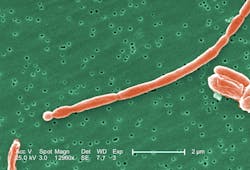New and highly infectious E. coli strain resistant to powerful antibiotics
A new type of E. coli that is both highly infectious and resistant to some antibiotics has been discovered.
The newly identified mutation of antibiotic-resistant E. coli is described in a new paper in Nature Communications. The team, including Professor Alan McNally from the University of Birmingham suggests that some existing antibiotics called carbapenems will be ineffective against the bacteria.
While scientists have already identified strains of carbapenem-resistant Escherichia coli (CREC) and note that is one of the most problematic AMR bacteria in circulation, with the ST410 version becoming the most common resistant E. coli in Chinese hospitals between 2017-2021. Now, the discovery of a stronger and more infectious version of ST410 CREC, called ‘B5/H24RxC’, has been implicated in two outbreaks in a children’s hospital in China.
Analysis of the B5/H24RxC strain in a lab showed the bacteria was able to grow faster and was more harmful to living organisms than previous versions.
Samples from hospitals across 26 Chinese provinces between 2017 and 2021 were used to examine how widespread antibiotic-resistant E. coli was.
Using a total of 388 CREC isolates from various clinical samples including urine, sputum and blood, the team were able to identify that ST410 was the most common CREC, and given that the highest proportion of samples (111) were taken from urine, that there may be a connection to urinary tract infections.





